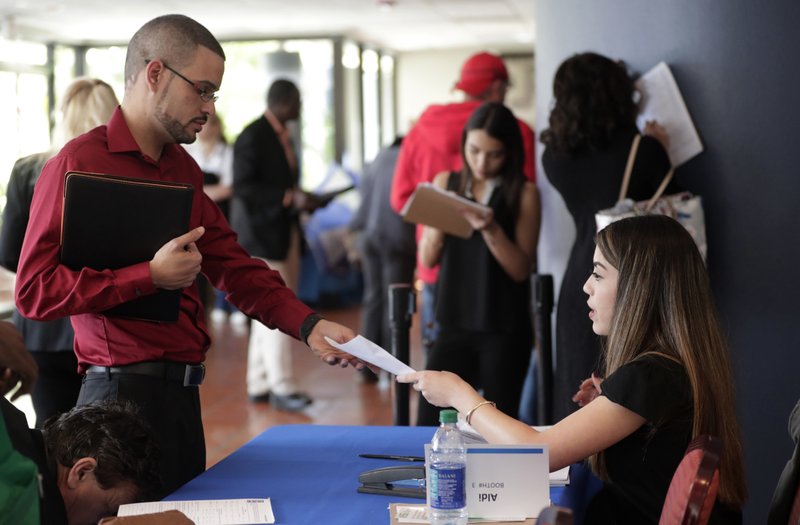WASHINGTON — U.S. employers added a modest 103,000 jobs in March after several months of robust gains, though the government's overall jobs report suggests that the labor market remains fundamentally healthy.
The unemployment rate remained at 4.1 percent, a 17-year low, for a sixth straight month, the Labor Department said Friday. Average hourly pay ticked up, climbing 2.7 percent compared with a year earlier.
The government on Friday also revised down its estimate of job growth for January and February by a combined 50,000. Still, over the past six months, employers have added a healthy average of 211,000 jobs a month, evidence that hiring in the United States remains solid and the economy on solid footing in its ninth year of recovery from the Great Recession.
Last month's modest job gain may indicate that some employers want to hire more but are struggling to find the workers they need. A separate government report last month showed that there was nearly one open job for every unemployed person, the lowest ratio on records dating back two decades.
Some of the drop-off in hiring for March was weather-related, with late spring snowstorms blanketing the Northeast, closing construction sites and likely postponing shopping trips for spring clothes. Construction companies cut 15,000 jobs after five months of big gains. Retailers shed 4,400 jobs.
The U.S. economy as a whole appears to be sturdy, with the recovery from the 2008-2009 Great Recession now the second-longest expansion since the 1850s, when economists began tracking recessions and recoveries. Still, the expansion has been puzzlingly slow, with economic growth averaging just 2.2 percent a year — about a percentage point below the historical average. But its durability has been broadly beneficial.
For example, a rising number of working-age Americans have begun looking for a job and finding one, reversing a trend from the first few years after the recession when many of the unemployed grew discouraged and stopped looking for work.
An increasing need to compete for workers may also finally be lifting wages in some sectors. Yet the steady influx of new workers, which gives employers more hiring options than the low unemployment rate might otherwise suggest, may be holding back overall pay growth.
Though the economy likely slowed in the first three months of this year, economists expect growth will rebound in the coming months. Macroeconomic Advisers, a consulting firm, forecasts that the economy grew at just a 1.4 percent annual rate in the January-March quarter — less than half the 2.9 percent annual pace of the October-December quarter. But the firm expects growth to rebound to a decent 3.1 percent annual pace in the current April-June quarter.
Other reports indicate that growing optimism among businesses and consumers should help propel the economy in the months ahead.
Businesses have stepped up their spending on manufactured goods, helping lift factory output.
And last month, factories expanded at a healthy pace after having grown in February at the fastest rate since 2004, according to a private survey. Government data showed that orders for long-lasting factory goods — including industrial machinery, metals and autos — surged in February.
Americans have spent less at retail chains in the past two months, after shopping at a healthy pace during the winter holiday season. With consumer confidence near the highest point in two decades, however, consumer spending is likely to rebound in the coming months.

